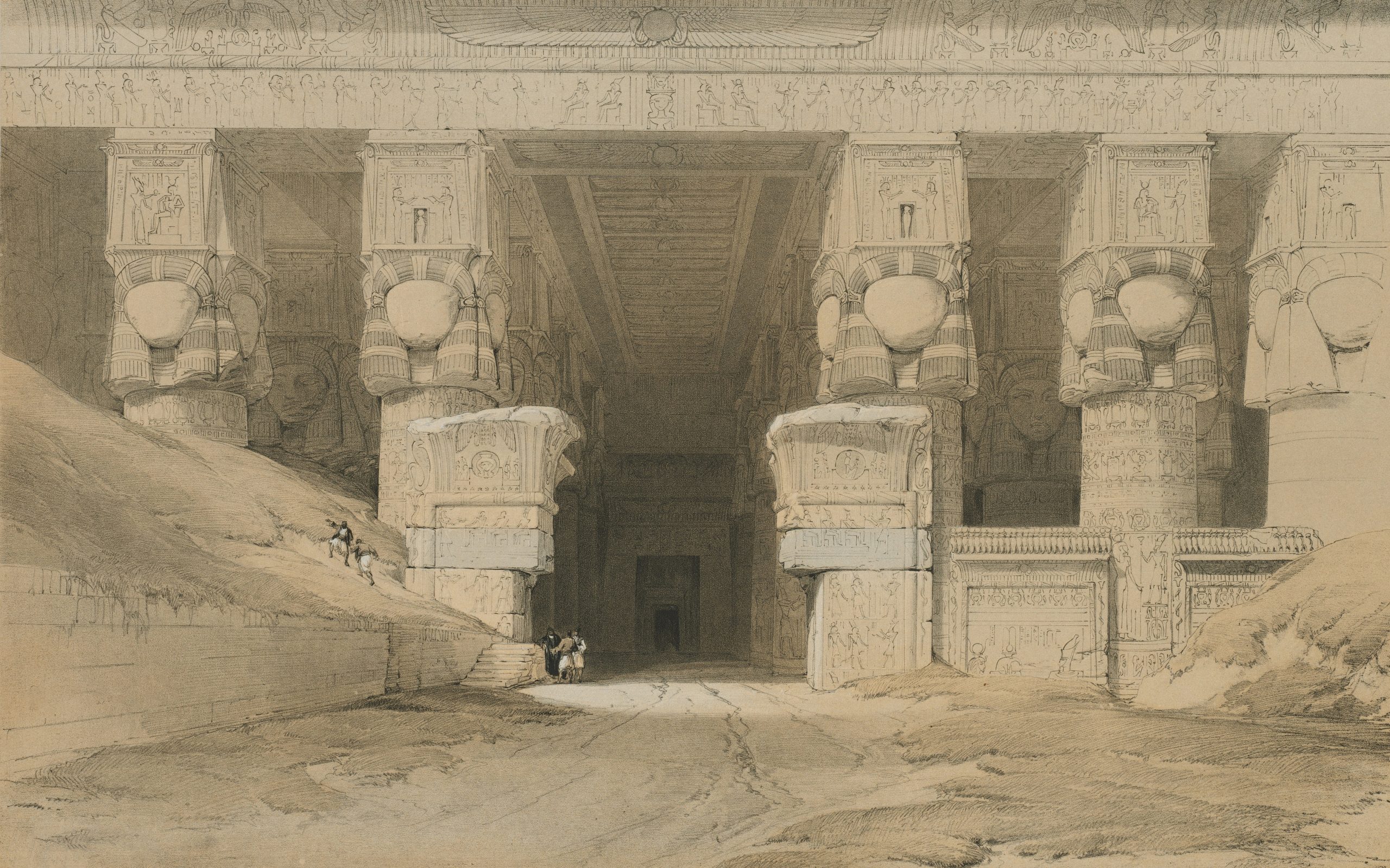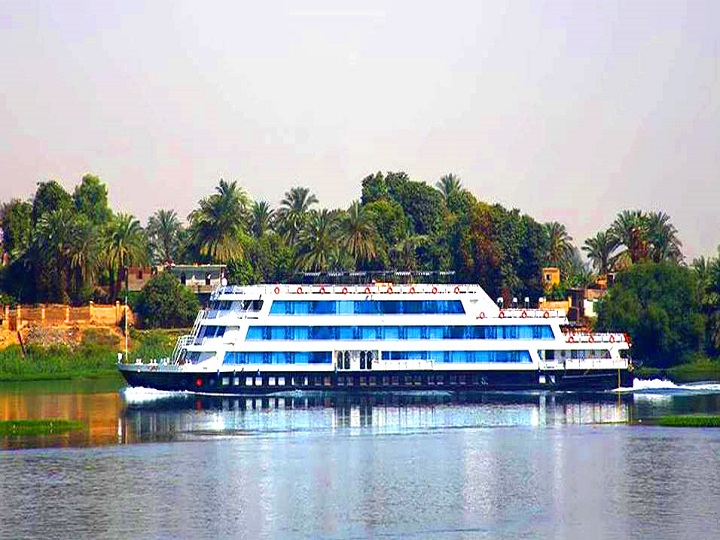This website uses cookies so that we can provide you with the best user experience possible. Cookie information is stored in your browser and performs functions such as recognising you when you return to our website and helping our team to understand which sections of the website you find most interesting and useful.

By Hesham Elgammal on 03 Apr 2025
Discover the rich History of Cairo and the surrounding area, If you want to visit a city that is an intriguing combination of ancient wonders and bustling 21st-century life, it would be difficult to find a better option than booking a visit to Cairo. Established more than a thousand years ago, Cairo is the capital city of Egypt. Formerly located close to the fertile Nile Delta to ensure the town was provided with food from the surrounding area, today, Cairo’s location means it is attractively close to the Pyramid of Unas and a variety of other well-known attractions.
The Ancient Roots of Cairo: From Memphis to Al-Fustat
Cairo’s story begins deep in the sands of antiquity, with the founding of Memphis around 3100 BCE. As the inaugural capital of a newly unified Egypt, Memphis stood at the crossroads of politics, religion, and commerce. Its prime location at the gateway to the Nile Delta turned it into a thriving center of civilization, where majestic temples and sacred monuments once rose to honor the gods, many of which still spark awe among archaeologists today.
Over time, Egypt’s political heart shifted, paving the way for the rise of new urban centers. One such city was Al-Fustat, established in 641 CE by Muslim general Amr ibn al-As after the Islamic conquest. Nestled on the eastern bank of the Nile River, Al-Fustat blossomed into a vibrant cityscape of mosques, markets, and a dynamic cultural scene. It quickly drew scholars, artisans, and merchants from across the Islamic world, becoming a lively crossroads of intellect and innovation.
Yet, it wasn’t until the Fatimids rose to power in the 10th century that Cairo, as we know it today, truly came into its own. In 969 CE, they founded Al-Qahira—meaning “The Victorious”—laying it atop earlier settlements and breathing new life into the region. This era saw the rise of iconic landmarks like Al-Azhar University and the Al-Hakim Mosque, symbols of Cairo’s growing stature. From the sacred stones of Memphis to the bustling alleys of Al-Fustat and the grand vision of Fatimid Cairo, the city’s evolution reflects a layered and ever-shifting legacy, rich with spiritual depth, cultural fusion, and historical gravity.

Tour around Saqqara Necropolis
Architectural Marvels: Exploring Cairo’s Historic Landmarks
Cairo’s skyline offers a breathtaking panorama where ancient wonders and medieval masterpieces coexist, narrating the city’s layered past through stone and structure. Cairo’s location means it is attractively close to the Pyramid of Unas and a variety of other well-known attractions.
A Wealth of Attractions to be Found in Cairo
Cairo is home to a cosmopolitan selection of shops, restaurants, museums, and places of interest. The city consists of some different areas, each with its unique ambiance. Why not pay a visit to Old Cairo, or find out more about the intriguing Citadel of Cairo? A morning spent walking around one of the older areas of the city is an excellent opportunity to see architecture and a way of life that has remained almost the same for centuries. As well as the chance to explore the city, Cairo is also an excellent base from which to go out on excursions into the surrounding area.
As centuries unfolded, Cairo evolved into a hub of Islamic architecture, leaving behind a trail of enduring marvels. The Mosque of Ibn Tulun, dating back to 876 CE, is among the oldest surviving mosques in the city. Its vast courtyard and distinctive spiral minaret echo the elegance of Abbasid design. From the same period of flourishing Islamic art, the Al-Hakim Mosque, built in the 10th century under the Fatimids, stands out with its intricate detailing and commanding facade. The mosque’s unique minarets, rising from square bases into cylindrical towers, have become emblematic of Cairo’s silhouette.
The architectural splendor continued into the Mamluk era, best exemplified by the monumental Mosque-Madrasa of Sultan Hassan. Erected in the 14th century, this complex, which blends a mosque, religious school, and mausoleum, showcases soaring minarets and an ornate interior that reflects the artistic heights of the time. Not far from it lies the Citadel of Cairo, a formidable medieval fortress offering sweeping views of the city. Within its walls stands the Mosque of Muhammad Ali, whose Ottoman domes and slender minarets—built in the 19th century—add yet another historical layer to Cairo’s ever-evolving architectural story.

visit Cairo
The Nile’s Influence: How the River Shaped Cairo’s Development
Often hailed as the lifeblood of Egypt, the Nile River has long been at the heart of Cairo’s growth and resilience. Its annual floods once blanketed the surrounding land with fertile silt, creating ideal conditions for farming and giving rise to ancient settlements. This natural cycle of renewal became the bedrock of Egyptian civilization
Cairo’s position along the river’s eastern bank played a pivotal role in its rise as a bustling metropolis. With the Nile flowing north to the Mediterranean and south into the heart of Africa, the city naturally evolved into a thriving trade hub. Its ports and markets buzzed with activity, drawing merchants from across continents and facilitating the exchange of goods ranging from spices and silks to grains and gold. This steady flow of commerce turned Cairo into a center of wealth and influence throughout the ancient and medieval worlds.
But the Nile’s impact goes far beyond economics. It has deeply influenced the cultural and spiritual fabric of the city. Its presence is felt in Egyptian art, poetry, and music—an eternal muse that has inspired generations. Ceremonies and festivals often celebrated the river’s gifts, tying spiritual traditions to the rhythms of nature. Along its banks, Cairo’s palaces, gardens, and mosques have stood witness to centuries of change, becoming landmarks in the city’s evolving identity. The Nile is more than just a river—it’s a living thread that connects Cairo’s past, present, and soul.
The Role of Cairo in Modern Egyptian History
Cairo has long stood at the epicenter of Egypt’s modern journey, playing a key role in the nation’s political, social, and cultural evolution. In the early 1800s, the city became the stage for sweeping reforms introduced by Muhammad Ali Pasha, often hailed as the architect of modern Egypt. His vision brought bold changes to the administrative system, military structure, and national economy. By promoting education, building infrastructure, and encouraging local industries.
By the latter half of the century, Cairo was undergoing a dramatic transformation of its own. Rapid urban growth and population surges turned it into a vibrant if increasingly congested, cultural and economic powerhouse. While the city flourished as a hub for conferences, art, and intellectual life in the Arab world, it also wrestled with the mounting pressures of overcrowding, pollution, and infrastructural strain. Still, Cairo’s ability to adapt—without losing sight of its identity—has remained one of its defining strengths. Through decades of challenge and change, the city has continued to reflect both the aspirations and the complexities of modern Egypt.
Cultural Heritage: Festivals, Arts, and Traditions in Cairo
Cairo’s cultural legacy is a rich blend of culture and history, celebrations, and creative expression. The city’s calendar brims with festivals that honor both its deep-rooted history and its modern artistic pulse. Among the most notable is the Cairo International Film Festival, founded in 1976. This celebrated event draws filmmakers, actors, and cinephiles from across the globe, offering a platform for diverse cinematic voices and fostering dialogue between cultures. It stands as a clear reflection of Cairo’s status as a cultural epicenter in the Arab world and beyond.
Yet Cairo’s cultural heartbeat is just as strong in its grassroots traditions. Local celebrations like the annual Moulid festivals bring vibrant life to the city’s streets. These gatherings, held in honor of saints and religious figures, are alive with color, sound, and community spirit. The Moulid of Sayyidna al-Hussein, in particular, fills the historic alleys of Islamic Cairo with processions, Sufi music, and communal feasting. Such festivals create a space where faith and festivity merge, uniting neighborhoods in shared experiences.
Artistic expression runs deep through Cairo’s veins, from ancient crafts to cutting-edge performance. The city’s bustling souks, especially Khan el-Khalili, overflow with handwoven textiles, delicately engraved brass and vibrant ceramics—each piece a testament to craftsmanship passed down through generations. Music, too, thrives in Cairo, with sounds ranging from classical Arabic compositions to bold modern fusion. Cultural venues like the Cairo Opera House and El Sawy Culture Wheel offer stages for everything from traditional dance to avant-garde theater. It’s this seamless blend of heritage and innovation that makes Cairo not just a city of history, but a living, breathing center of cultural vitality
The Impact of Tourism on Cairo’s Historical Sites
Tourism has long played a vital role in Cairo’s economy, drawing millions eager to explore its legendary landmarks—from the awe-inspiring Pyramids of Giza to the storied halls of the Egyptian Museum and the vibrant souks that line its streets. This steady stream of visitors fuels a wide range of industries, including hospitality, transport, retail, and entertainment. The resulting economic lift has proven invaluable, providing jobs and income for countless residents while supporting broader urban development across the city.
Conclusion: The Future of Cairo’s Historical Legacy
As our journey through Cairo’s layered and mysterious past comes to a close, one truth stands clear: this extraordinary city remains a living monument to human resilience, imagination, and cultural depth. From the sacred sands of ancient Memphis to the electric pulse of modern Cairo, its story is a sweeping reflection of civilizations intertwined, ideas exchanged, and identities forged across time. Each monument, manuscript, and melody found here offers a window into the soul of humanity and reminds us of the enduring threads that connect us all
In the end, Cairo’s historical wealth is not merely a memory of what once was—it is a guidepost for what can be. As the city strides into an ever-changing world, it carries with it the wisdom of millennia and the promise of tomorrow. With care, vision, and collective will, Cairo will continue to rise, bridging time, uniting cultures, and echoing the brilliance of human endeavor. future, Cairo remains a city like no other, inviting us all to unearth its secrets and celebrate its timeless wonders.
Check out more about Cairo Tour Packages
Categories
- Egypt and Jordan Tours (12)
- Egypt Destinations (26)
- Egypt Nile Cruises (40)
- Egypt Sightseeing (14)
- Egypt Tour Packages (17)
- infographics (1)
-

Nile Cruisers Reviews
25 Mar 2025
-

Why Choose Nile Cruisers to Book Your Egypt Nile Cruise?
12 Dec 2025
-

Celebrate Christmas in Egypt: Best Egypt Travel Tour Packages for Year-End Getaways
12 Dec 2025
-

Make Your Year-End Special: Festive Egypt Tour Packages for Winter Travel
12 Dec 2025
-

The Lake Nasser Luxury Cruise Ships
09 Dec 2025
-

Sacred Egypt – Spiritual Tours
07 Dec 2025
-

Nile Cruise from Cairo to Aswan
06 Dec 2025
-

Nile Cruisers Reviews
25 Mar 2025
-

Why Choose Nile Cruisers to Book Your Egypt Nile Cruise?
12 Dec 2025
-

Celebrate Christmas in Egypt: Best Egypt Travel Tour Packages for Year-End Getaways
12 Dec 2025
-

Make Your Year-End Special: Festive Egypt Tour Packages for Winter Travel
12 Dec 2025
-

The Lake Nasser Luxury Cruise Ships
09 Dec 2025












Comments